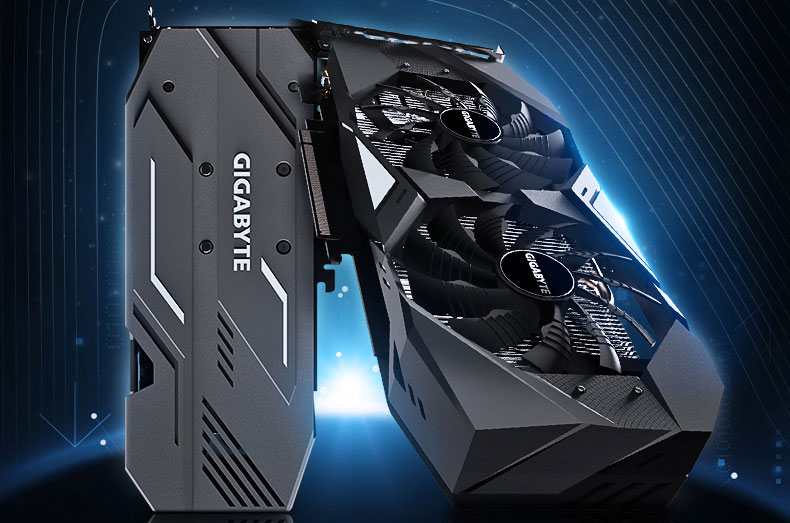GeForce GTX 1650 graphics cards come into view ahead of an official launch
A look at new Turing cards that are on the way.

Update: The GeForce GTX 1650 review is now live, if you want to know more.
It seems Nvidia's hardware partners are raring to go with a bunch of custom GeForce GTX 1650 models to compete with the best graphics cards, as soon as the GPU maker gives them the green light. That is expected to come this week. In the meantime, however, press renders and product listings have already cropped up.
Leaks are coming from various corners of the web, one of which is a product listing at Jingdong (JD.com), a Chinese e-commerce company headquartered in Beijing. The listing shows a shortened Gigabyte GeForce GTX 1650 Mini ITX OC 4G model. Built for small form factor (SFF) setups, it measures just 152mm (~6 inches) in length, and has a single cooling fan. It also lacks a PCIe power connector, meaning the 75W provided by a PCIe x16 slot will be sufficient to power the card.
This is consistent with past leaks we have seen. Notably, a press render of a Zotac-brand GTX 1650 materialized a couple of weeks ago, and it too lacked a PCIe connector.
As we suspected, not all GTX 1650 will draw power just from a PCIe x16 slot, though. Videocardz rounded up a bunch of press renders from the likes of Asus, Gigabyte, MSI, and Zotac, and some of the longer, faster-clocked cards do in fact sport a 6-pin power connector.

Gigabyte's GeForce GTX 1650 Gaming OC is one them. It sports a dual-fan design and RGB lighting, and ships with a factory overclock—the boost clock is goosed to 1,815MHz, versus what some listings show as 1,665MHz being the stock boost frequency. If true, then Gigabyte's card is running 9 percent faster than reference.
The leaks are in line with everything we know about the GTX 1650 so far. They essentially confirm the GTX 1650 will ship with 4GB of GDDR5 memory and a 128-bit memory bus. It also appears as though the GTX 1650 will in fact sport a new TU117-300 GPU with 896 CUDA cores and 56 texture units.
Keep up to date with the most important stories and the best deals, as picked by the PC Gamer team.
As this will be another GTX part, it will not have any RT or Tensor cores to throw at real-time ray tracing Deep Learning Super Sampling (DLSS) chores. Nvidia recently opened up DXR support on non-RTX cards (going back to Pascal), but don't expect to accomplish that with the GTX 1650—in our hands-on testing, most GTX cards perform poorly with ray-traced workloads, including the burlier GTX 1660.
Paul has been playing PC games and raking his knuckles on computer hardware since the Commodore 64. He does not have any tattoos, but thinks it would be cool to get one that reads LOAD"*",8,1. In his off time, he rides motorcycles and wrestles alligators (only one of those is true).


